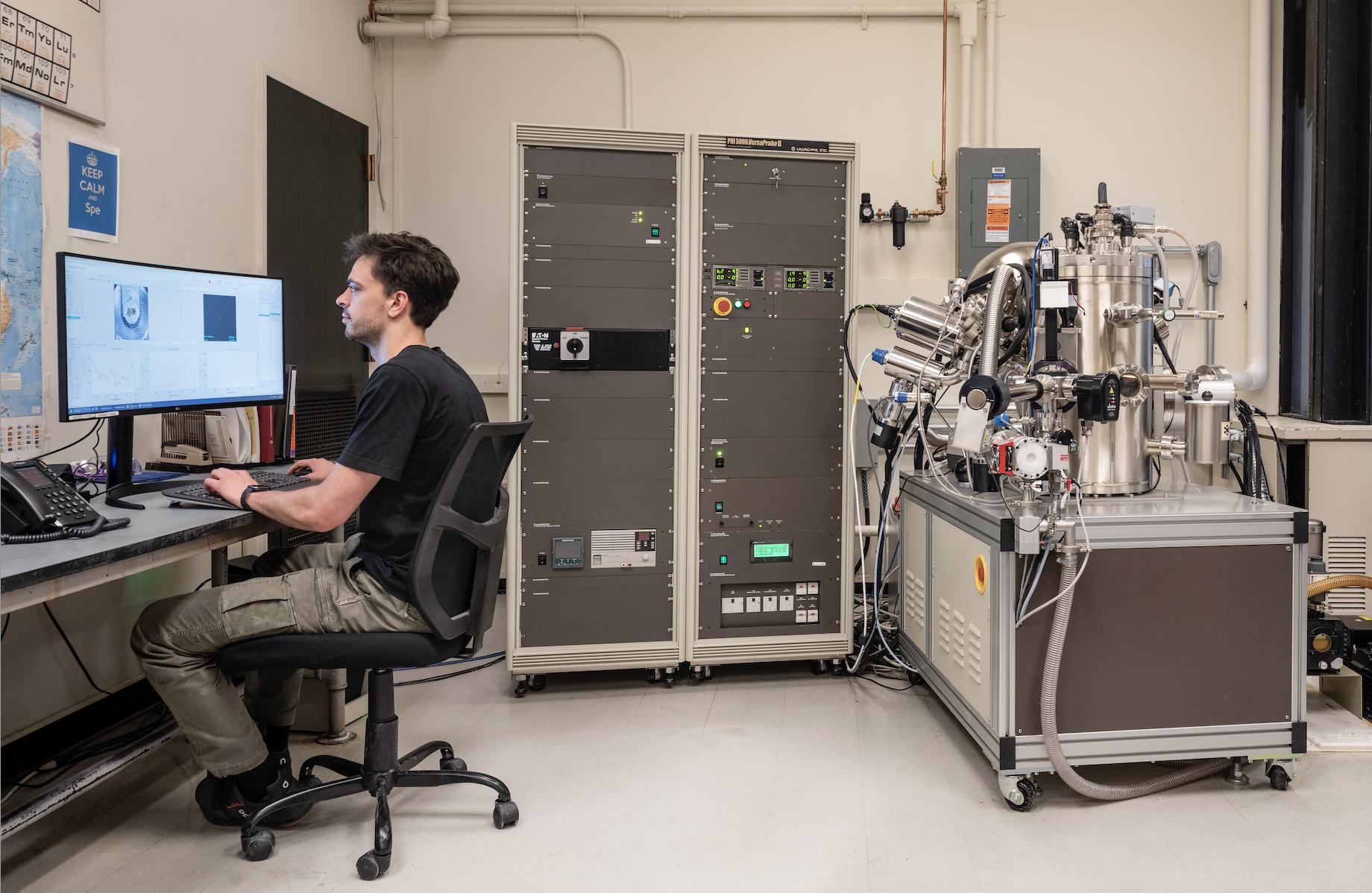DATE: Wednesday, October 22, 2025
TIME: 9 a.m. – 5 p.m.
LOCATION: MIT.nano (12-0168)
SPEAKER: Jennifer Mann, PhD, XPS Specialist, Physical Electronics
Register for this workshop Add to Calendar
 MIT.nano's PHI VersaProbe II X-ray Photoelectron Spectrometer has been upgraded to the latest Windows 11 VersaProbe XPS software. To support the MIT user community in leveraging these new features, Physical Electronics (PHI) XPS Specialist Dr. Jennifer Mann will visit MIT.nano to give MIT's XPS user community a deep dive into the new capabilities this software upgrade brings, including software for calculating film thicknesses from angle resolved XPS, StrataPHI.
MIT.nano's PHI VersaProbe II X-ray Photoelectron Spectrometer has been upgraded to the latest Windows 11 VersaProbe XPS software. To support the MIT user community in leveraging these new features, Physical Electronics (PHI) XPS Specialist Dr. Jennifer Mann will visit MIT.nano to give MIT's XPS user community a deep dive into the new capabilities this software upgrade brings, including software for calculating film thicknesses from angle resolved XPS, StrataPHI.
Agenda
9AM – 12PM
- New instrument features in PHI's Windows 11 SmartSoft XPS user interface, including new data acquisition features like Smart Mosaic and Queuing.
- XPS data processing tricks and tips using PHI's MultiPak data processing software.
- How to use and get the most out of PHI's StrataPHI film thickness calculation software.
- Q&A
12PM - 1PM: Lunch
1PM – 3PM: VersaProbe demonstration of new software features described in the morning session.
3PM – 5PM: Lecture: “Advancing surface science: The latest innovations in PHI XPS instruments"
This workshop will highlight recent software advancements, including StrataPHI for film thickness determination via angle-resolved XPS, and provide hands-on guidance in data acquisition and analysis. This is an opportunity for new and experienced XPS users to learn about these capabilities, and to get data acquisition and data processing questions answered in person by a PHI expert.
Dr. Mann will also introduce the advanced capabilities of the PHI Genesis, PHI’s state-of-the-art automated multi-technique scanning XPS/HAXPES microprobe. This system integrates high-resolution scanning XPS technology with dual-beam charge neutralization, high-throughput automation, and a versatile multi-technique platform - offering expanded functionality for comprehensive surface and interface characterization.
The PHI Genesis integrates traditional XPS analysis with techniques like Hard X-ray Photoelectron Spectroscopy (HAXPES), Low Energy Inverse Photoemission Spectroscopy (LEIPS), Ultraviolet Photoelectron Spectroscopy (UPS), Auger Electron Spectroscopy (AES), and Reflection Electron Energy Loss Spectroscopy (REELS). These techniques can be applied to the same sample area in an automated sequence, enabling comprehensive surface and depth analysis across a wide energy range.
Additional capabilities for increased experimental flexibility include in situ heating and cooling, inert gas transfer from glove box to instrument, and cluster ion guns for gentler depth profiling. The system's user-friendly interface and automated functionalities ensure efficient and accurate data acquisition, making it an invaluable tool for researchers and scientists in fields such as materials science, electronics, and surface analysis.
